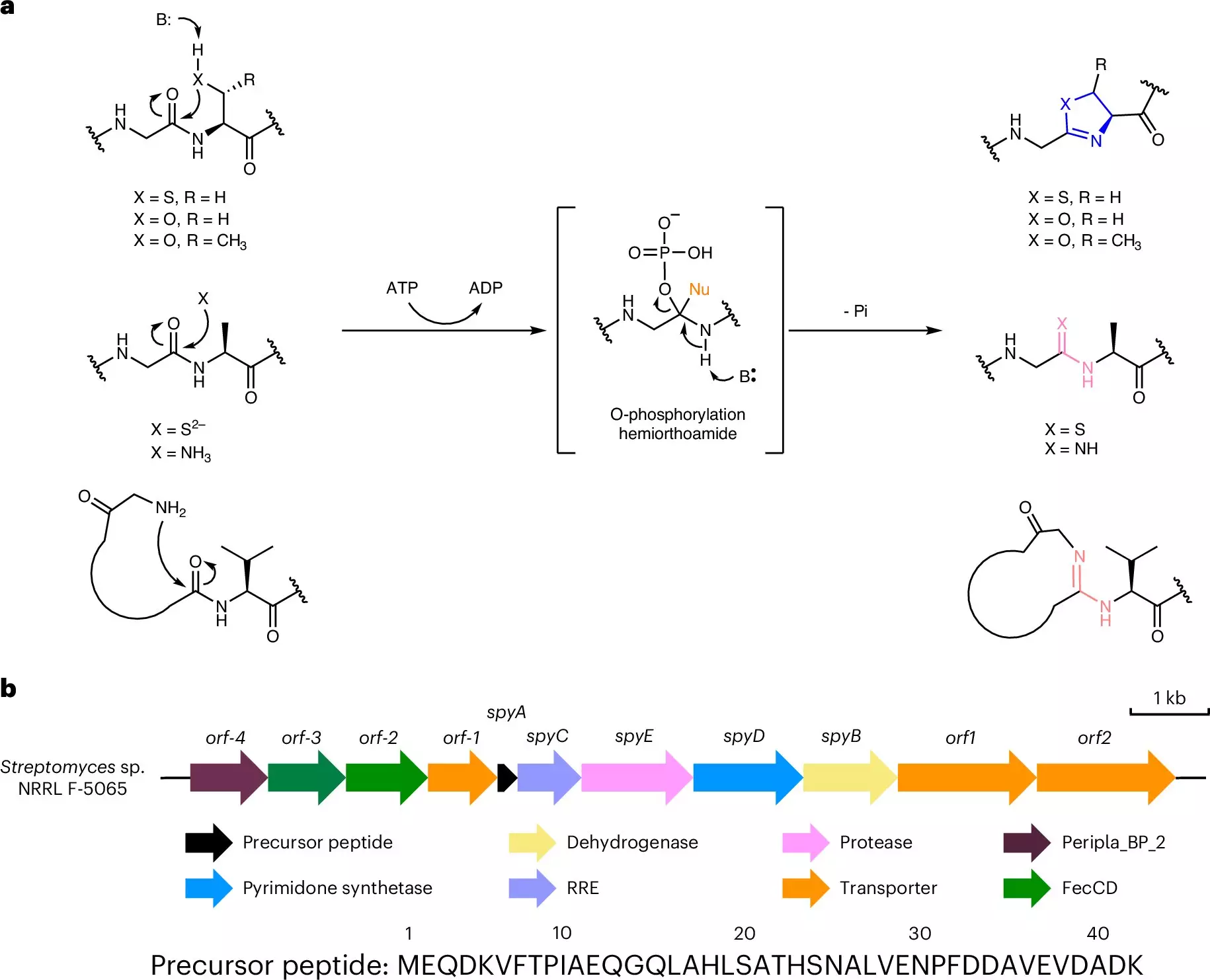The frontier of biotechnology has recently advanced dramatically with the integration of biohybrid molecules, specifically combining the properties of DNA and proteins. These hybrids hold the potential for significant therapeutic applications, particularly in the realm of precision medicine. A recent study published in *Nature Chemical Biology* highlights a breakthrough achievement—this innovation does not merely build upon existing methodologies; it radically transforms how biohybrids can be produced by leveraging natural processes found in bacteria.
Biohybrid molecules serve as a bridge between the two fundamental classes of biological macromolecules: nucleic acids and proteins. Nucleic acids, primarily RNA and DNA, are responsible for the storage and transmission of genetic information, while proteins perform most cellular functions from catalysis to signaling. The challenge that chemists have faced for decades lies in synthesizing these molecules together in a way that harnesses their combined effects for therapeutic benefit. The work led by Professor Satish Nair and his team at the University of Illinois Urbana-Champaign presents an innovative solution to this long-standing issue.
What makes this research particularly intriguing is its serendipitous origin. Initially, Nair and his colleagues were investigating metal-binding proteins when they encountered a lead from a team at the John Innes Centre in Norwich, England, who had identified a possibly natural DNA-protein hybrid molecule. This discovery propelled Nair’s team to delve deeper, collaborating with the British scientists to unravel the complexities behind this hybrid structure. This collaboration exemplifies the importance of interdisciplinary work in scientific discovery, sparking innovations that would typically remain dormant within isolated research efforts.
The investigational pathway illuminated by Nair and his team reveals an ingenious use of bacterial enzymes to synthesize these hybrids efficiently. They identified two crucial enzymes: YcaO and a specific protease. YcaO modifies the amino acid sequences in peptides, triggering the formation of cyclic structures that mimic the pairing found in nucleobases of DNA. The protease then performs additional modifications to render the molecule fully functional. Unlike traditional chemical synthesis, which is typically labor-intensive and not scalable, this method exploits bacterial capabilities to produce vast libraries of these hybrids.
The implications of this technology are profound. By utilizing biohybrid molecules, researchers can formulate drugs that are much more precise in targeting specific gene sequences or RNA molecules involved in disease progression. For instance, the ability to bind to mutated genes or pathogenic noncoding RNAs opens up novel avenues for intervention in a variety of diseases, including cancer and genetic disorders. This precision not only enhances therapeutic efficacy but also minimizes potential side effects, a significant concern in contemporary medicine.
The breakthrough reported by Nair and his colleagues propels the field of biohybrids into a new era. The mechanics of the discovery promise to streamline and scale the production of hybrid molecules, vastly increasing the speed of drug discovery processes. The efficiency of utilizing E. coli to produce these compounds adds an additional layer of practicality; laboratories can now conduct their research unencumbered by the limitations of traditional synthetic methods.
Nair’s excitement about the research is palpable, with the phrase “Now, we’re off to the races” encapsulating the potential for rapid advancements yet to come. In a broader sense, this research emphasizes the importance of integrating natural biological systems into synthetic biology. By leveraging existing biological processes, the path toward groundbreaking therapeutic interventions becomes not only more feasible but also more efficient.
The pioneering work on biohybrid molecules by Professor Satish Nair and his team represents a significant stride forward in biotechnology. By tapping into the inherent abilities of bacteria, they have opened doors to a multitude of therapeutic possibilities that promise precision and efficiency. As research continues to evolve, the hope is that we will see real-world applications that can combat diseases more effectively, ultimately enhancing patient outcomes in medicine. The synergy between biological knowledge and engineering could well herald a new wave of discoveries that reshape therapeutic interventions across various medical fields.


Leave a Reply